
In the bustling urban landscapes around the world, street art has transformed dull and monotonous walls into vibrant canvases that tell stories and ignite emotions. Among the many renowned street artists, Kotis has emerged as a prominent figure, leaving his mark on the streets. His unique style and distinct artistic expression have captivated the hearts of onlookers and art enthusiasts alike.
With a spray can in hand and a vision in mind, Kotis breathes life into once neglected spaces. His art is a reflection of the spirit and diversity of the city, capturing both the struggles and triumphs of its residents. From colorful murals that celebrate cultural heritage to thought-provoking pieces that question social norms, Kotis’ work seamlessly blends with the urban fabric, creating visual poetry for all to admire.
What sets Kotis apart is not just his incredible talent, but also his commitment to community engagement. He invites locals to participate in the creation of his artworks, fostering a sense of ownership and pride in the neighborhood. Through workshops and collaborative projects, he empowers individuals to find their own voice and express their thoughts and emotions through art. This inclusive approach has not only transformed physical spaces but also brought people together, forging connections and fostering a sense of belonging.
As we wander through the concrete jungles, let us pause and appreciate the raw beauty of street art. Let us marvel at the details and intricacies that Kotis and other street artists bring to our urban landscapes. For their art is not just an expression of creativity, but also a reminder of the vibrant human spirit that thrives amidst the concrete and steel.
Street art is a form of artistic expression that is created in public spaces, such as streets, walls, and buildings. It is often seen as a way for artists to communicate their ideas and emotions to a wider audience, challenging traditional notions of art and its placement in galleries.
Unlike traditional forms of art, street art is often created illegally, without permission from property owners. This can add an element of risk and rebellion to the art form, as artists may face legal consequences for their work. However, street art has also gained recognition and acceptance in many cities around the world, with some areas even commissioning artists to create pieces on public property.
Street art can take many forms, including graffiti, stencils, murals, and installations. It often incorporates bold colors, intricate designs, and powerful messages. Street artists use the urban landscape as their canvas, transforming blank walls into vibrant works of art that engage and provoke viewers.
The Evolution of Street Art
Street art has its roots in graffiti, which emerged in the late 1960s as a form of self-expression and social commentary in urban environments. Over time, graffiti evolved into a more complex and diverse art form, with artists experimenting with different techniques and styles.
In recent years, street art has gained mainstream recognition and has become a popular subject of study, exhibitions, and documentaries. It has also become a platform for social and political activism, with artists using their work to raise awareness about important issues such as inequality, injustice, and environmental concerns.
The Impact of Street Art
Street art has the power to transform the way we perceive and interact with our urban surroundings. By bringing art to the streets, it bypasses traditional barriers and engages a broader audience, sparking conversations and fostering a sense of community.
Moreover, street art can serve as a form of cultural expression, reflecting the unique identity and spirit of a city or neighborhood. It adds vibrancy and creativity to the urban landscape, making it more visually appealing and inspiring.
Overall, street art is a dynamic and ever-evolving art form that challenges conventions and pushes boundaries. It has the ability to captivate, inspire, and provoke thought, making it a powerful force of urban expression and creativity.
The Rise of Kotis
Kotis, a street artist from an urban neighborhood, has been making waves in the art world with his unique and creative expressions. Born and raised in the heart of the city, Kotis grew up surrounded by vibrant street art and graffiti. Inspired by the creativity and passion of the artists he saw, he decided to pick up a spray can and started leaving his mark on the walls of the urban landscape.
At first, Kotis’ art was seen as just another form of vandalism, but as his skills developed and his talent became more apparent, people started to take notice. His style began to evolve, combining elements of traditional graffiti with more abstract and symbolic imagery. This unique blend of styles and techniques became his trademark, setting him apart from other street artists.
As his reputation grew, Kotis began to receive invitations to showcase his work in galleries and exhibitions. This recognition gave him the opportunity to expand his artistic vision and experiment with new mediums and materials. With each new project, he pushed the boundaries of what street art could be, challenging the traditional notions of art and its place in society.
The Impact on the Urban Landscape
Through his art, Kotis has transformed the urban landscape, injecting color and creativity into once drab and neglected spaces. His murals can be found on walls, bridges, and buildings throughout the city, brightening up even the darkest corners. These vibrant expressions of creativity have become a source of inspiration and pride for the local community.
Not only has Kotis’ art beautified the city, but it has also sparked conversations and discussions about the role of street art in society. His work challenges the notion that art should be confined to galleries and museums, bringing it into the everyday lives of ordinary people. By reclaiming public spaces and using them as his canvas, Kotis is making a statement about the importance of creativity and self-expression in urban environments.
The Future of Kotis
With his growing recognition and popularity, the future looks bright for Kotis. He continues to push the boundaries of street art, exploring new techniques and styles to expand his artistic repertoire. He has also started mentoring and inspiring the next generation of street artists, passing on his knowledge and passion to ensure that the urban art movement continues to thrive.
As Kotis’ art becomes more widely recognized, it is likely that he will gain more opportunities to collaborate with other artists, designers, and organizations. His unique style and ability to capture the spirit of the city make him a valuable asset to any creative project or urban revitalization initiative.
| Year | Exhibition |
|---|---|
| 2015 | City Walls: A Celebration of Urban Art |
| 2016 | Streets Alive: A Showcase of Street Art |
| 2017 | From the Streets to the Gallery: Kotis’ Solo Exhibition |
The Art of Spray
Spray painting is a crucial element in the world of street art. It allows artists to express their creativity and leave a lasting impression on urban landscapes. With its vibrant colors and bold lines, spray paint adds a dynamic and contemporary feel to street art.
Freedom of Expression
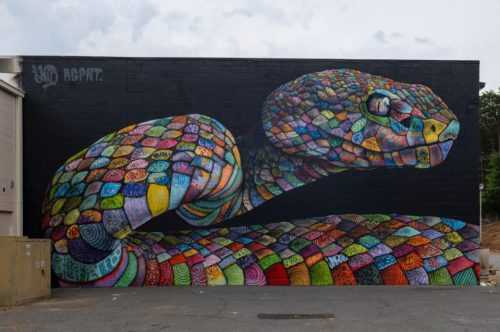
One of the key advantages of using spray paint as a medium is the freedom it provides to artists. Unlike traditional art forms that require brushes and canvases, spray paint allows artists to create large-scale murals with ease. This freedom enables them to unleash their imagination and create artwork that is impactful and eye-catching.
Moreover, the versatility of spray paint allows artists to experiment with various techniques and styles. From realistic portraits to abstract designs, spray paint opens up endless possibilities for artistic expression.
Challenges and Skills
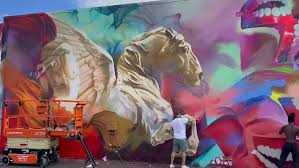
Spray painting, however, is not without its challenges. It requires a certain level of skill and precision to control the flow and intensity of the paint. Artists must develop a steady hand and an understanding of pressure and angle to achieve the desired effect.
Additionally, working with spray paint outdoors can present its own set of challenges. Factors such as wind, humidity, and temperature can affect the drying time and overall quality of the artwork. Artists must adapt and be resourceful in order to overcome these obstacles.
Mastering the art of spray paint takes time and practice. It requires patience, perseverance, and a willingness to push boundaries. But for street artists, the results are worth it. The art of spray allows them to leave their mark on the urban environment, capture the attention of passersby, and contribute to the vibrant tapestry of street art.
Understanding Graffiti
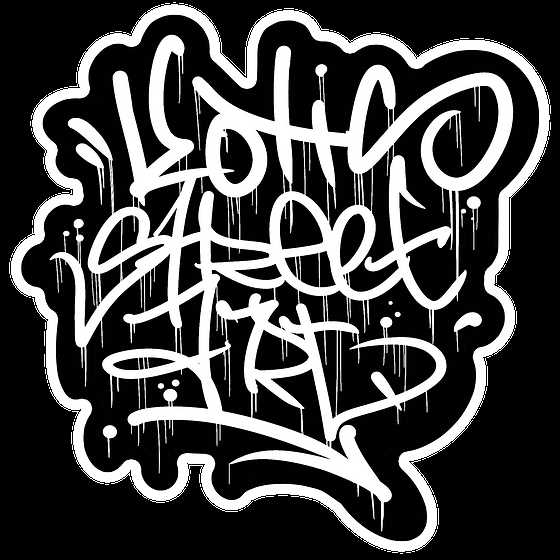
Graffiti is a form of visual art that is typically created illicitly in public spaces. It is characterized by its vibrant colors, bold lettering, and intricate designs. Graffiti is often used as a means of self-expression and can convey important social and political messages.
History of Graffiti
The history of graffiti dates back thousands of years, with early examples found in ancient Egypt and Greece. However, modern graffiti as we know it today emerged in the 1960s and 1970s in cities like New York City and Philadelphia. It was influenced by youth culture, hip-hop music, and the desire to leave a mark on the urban landscape.
The Different Styles of Graffiti
Graffiti can be categorized into different styles, each with its own unique characteristics. Some of the most common styles include:
- Tagging: This style consists of the artist’s signature or nickname, typically created quickly and with minimal effort.
- Throw-ups: Throw-ups are larger pieces that are created with spray paint, featuring blocky letters and simple designs.
- Pieces: Short for “masterpieces,” pieces are more intricate and time-consuming works that often include characters and elaborate lettering.
- Murals: Murals are large-scale graffiti artworks that cover entire walls or buildings and may depict complex scenes or tell a story.
Graffiti artists often develop their own unique styles, incorporating elements of these different styles and adding their own personal flair.
Graffiti has long been controversial, with some viewing it as vandalism and others considering it a legitimate form of art. While illegal graffiti is still common, there has been a shift in recent years towards legal and commissioned street art, which is seen as a way to beautify urban spaces and promote creativity.
Understanding graffiti is important in order to appreciate the talent and creativity behind these artworks and to engage in meaningful discussions about public art and self-expression.
Kotis: A Manifestation of Creativity
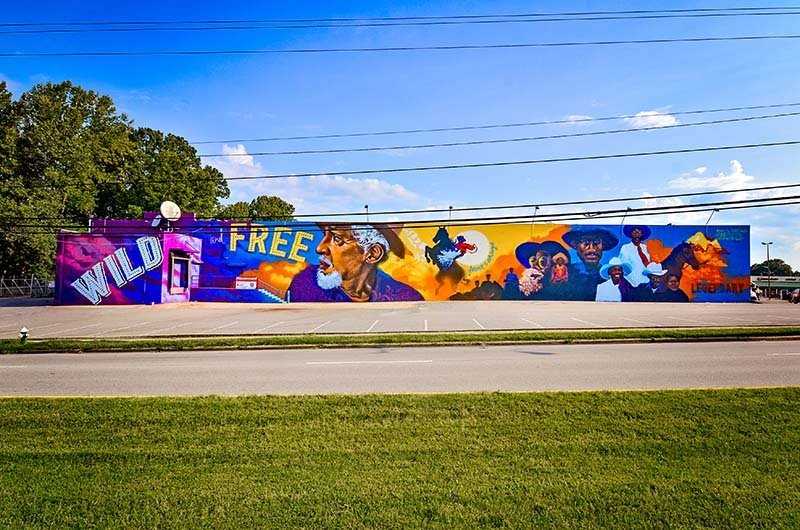
Kotis Street Art is a unique form of urban expression that showcases the creativity and artistic talent of its creators. The streets of Kotis have become a canvas for artists seeking to make a bold statement and express their individuality. From colorful murals to intricate graffiti designs, Kotis Street Art captures the imagination and leaves a lasting impression on all who encounter it.
The Power of Expression
Street art has long been a platform for individuals to express their thoughts, emotions, and opinions. Kotis Street Art takes this concept to a new level, with artists using the walls and buildings of the city as their canvas. Through their art, these talented individuals are able to communicate powerful messages and shed light on a variety of social and political issues. Kotis Street Art serves as a visual representation of the thoughts and ideas that are often expressed in more traditional forms of art.
A Reflection of the Community
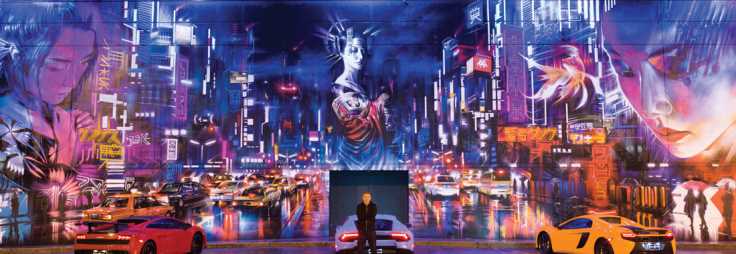
Kotis Street Art is not just an expression of individual creativity but also a reflection of the community itself. The art often incorporates local landmarks, cultural symbols, and elements of the surrounding environment. By incorporating these elements into their work, the artists are able to pay homage to their community and instill a sense of pride and identity among its residents.
Moreover, Kotis Street Art has the power to transform dreary and dilapidated spaces into vibrant and lively areas. The once overlooked walls and alleys of the city are now transformed into captivating works of art, attracting locals and tourists alike. The art serves as a catalyst for economic growth and revitalization, breathing new life into neglected areas of the city.
Exploring Urban Landscapes
Urban landscapes are a vibrant tapestry of sights and sounds that reflect the creativity and diversity of a city. These landscapes are the stage upon which street art thrives, capturing the essence of urban life and transforming dull walls into dynamic works of art. Exploring these urban landscapes reveals a world of hidden stories and untold narratives, waiting to be discovered.
The Power of Street Art
Street art has the power to transform a mundane cityscape into a captivating gallery. From colorful murals to thought-provoking graffiti, street art adds character and personality to urban environments. It challenges traditional notions of art and invites the community to engage with their surroundings in new and exciting ways. By exploring these urban landscapes, we can gain a deeper understanding of the stories and messages behind the art.
Uncovering Hidden Gems
| Benefits of Exploring Urban Landscapes | How to Explore Urban Landscapes |
|---|---|
| 1. Inspiration for your own creative pursuits | 1. Research and plan your route |
| 2. Increased cultural understanding | 2. Keep an eye out for public art initiatives |
| 3. Connection with the local community | 3. Engage with local artists and residents |
| 4. Discovery of hidden histories and narratives | 4. Capture your findings through photography or journaling |
Exploring urban landscapes is a gateway to discovering the heart and soul of a city. It allows us to connect with the community, gain insight into its history and culture, and appreciate the creativity that flourishes within its streets. So, grab a map, put on your walking shoes, and embark on your own urban adventure.
The Impact of Kotis Street Art
Kotis street art has had a profound impact on urban environments and the people who inhabit them. Through the vibrant colors, bold designs, and powerful messages found in Kotis street art, communities are given a voice and a platform for expression.
One of the most significant impacts of Kotis street art is its ability to transform and revitalize neglected or abandoned areas. By filling empty walls and public spaces with beautiful and thought-provoking artwork, these areas become more inviting and vibrant, attracting both locals and tourists.
Kotis street art also serves as a catalyst for conversation and social change. Many muralists use their art to address important social and political issues, sparking dialogue among community members and raising awareness about these topics. Street art can serve as a powerful tool for activism and can inspire individuals to take action in their communities.
In addition to its social impact, Kotis street art also has economic benefits. Street art festivals and tours have become popular attractions, drawing in visitors and generating revenue for local businesses. By transforming previously overlooked areas into cultural hubs, street art has the potential to boost tourism and stimulate local economies.
The impact of Kotis street art extends beyond just the physical environment. It fosters a sense of community and pride among residents who see their neighborhood transformed into an outdoor art gallery. Street art can also inspire creativity and provide a platform for emerging artists to showcase their talent.
Overall, Kotis street art has a powerful and transformative impact on urban spaces. It brings beauty, creativity, and social engagement to communities, making them more vibrant and inclusive. Through its ability to provoke thought and inspire action, Kotis street art has the potential to create lasting change in cities around the world.
The Evolution of Street Art
Street art has undergone a remarkable evolution over the years, transforming from a form of illicit artistic expression into a recognized art movement. This evolution can be attributed to several key factors:
1. Cultural and Political Shifts
One of the main catalysts for the evolution of street art has been the changing cultural and political landscape. Street artists have used their work to comment on social issues, challenge authority, and highlight marginalized voices. As societies have become more open to unconventional forms of art and expression, street art has gained mainstream recognition.
2. Technological Advancements
The advent of new technologies, particularly in the realm of graffiti tools and digital art, has also contributed to the evolution of street art. Artists now have access to a wider range of materials and techniques, allowing them to create more intricate and detailed works. Additionally, the rise of social media has provided street artists with a platform to share their creations with a global audience.
3. Recognition as an Artform
In recent years, there has been a growing recognition of street art as a legitimate art form. Art institutions and galleries are increasingly exhibiting street art, and collectors are investing in pieces created by renowned street artists. This validation has helped elevate street art and establish it as an important part of the contemporary art world.
4. Collaboration and Integration
Street art has also evolved through collaboration and integration with other art forms. Artists have begun to incorporate street art into multimedia installations, sculptures, and performance art, blurring the boundaries between traditional forms and street art. This interdisciplinary approach has added depth and complexity to the movement.
The evolution of street art continues to evolve, pushing boundaries and challenging perceptions. As the movement gains further recognition and acceptance, it is poised to have an even greater impact on the art world and the public’s understanding of what art can be.
Kotis: Breaking Stereotypes
Kotis Street Art is not just about pretty pictures on walls. It is a powerful form of expression that challenges stereotypes and breaks societal norms.
By using walls as his canvas, Kotis aims to deconstruct the traditional notions of art and reshape the urban landscape. His bold and vibrant murals depict a diverse range of subjects, from political activism to personal struggles, providing a voice to those who are often marginalized and unheard.
Through his art, Kotis promotes inclusivity and celebrates diversity. His murals feature people from all walks of life, challenging stereotypes and promoting understanding. By portraying individuals with different backgrounds, races, and cultures, he aims to create a sense of unity and encourage empathy in our society.
One of the key themes in Kotis’ work is the empowerment of women. His murals often portray strong and independent women, challenging the patriarchal norms that prevail in society. Through his art, he aims to give a voice to women who have been silenced and to inspire others to break free from societal expectations.
Kotis’ street art is not limited to walls. He also organizes workshops and community events to engage with local communities and spread his message of breaking stereotypes. These events provide an opportunity for people to learn more about street art, express themselves creatively, and challenge their own biases and preconceptions.
Kotis’ work has gained international recognition, and his murals can be found in cities around the world. Through his art, he is able to connect with people from different cultures and backgrounds and spark conversations about important social issues.
Embracing the Unconventional
One of the most captivating aspects of Kotis Street Art is its embrace of the unconventional. Unlike traditional art forms that are confined to galleries and museums, street art takes art out of its traditional setting and brings it directly to the people. It disrupts the status quo and challenges the notion of what art can and should be.
A Platform for Expression
Street art provides a platform for artists who might not have had the opportunity to showcase their work in more traditional settings. It offers a voice to those who may have been marginalized or excluded from the mainstream art scene. By embracing the unconventional, street art allows for a more diverse and inclusive artistic expression.
Engaging the Community
Street art has the unique ability to engage and connect with the community. Unlike other art forms that can sometimes feel distant or inaccessible, street art is located in public spaces that are easily visible and accessible to everyone. It sparks conversations, elicits emotions, and fosters a sense of belonging and connection among community members.

I am a mural enthusiast and a fervent admirer of street art. Rather than creating murals myself, I am passionate about collecting them. My love for street art knows no bounds. I am dedicated to curating and cherishing these artworks that grace the streets. My collection stands as a testament to my profound appreciation for this form of artistic expression.
read about me



